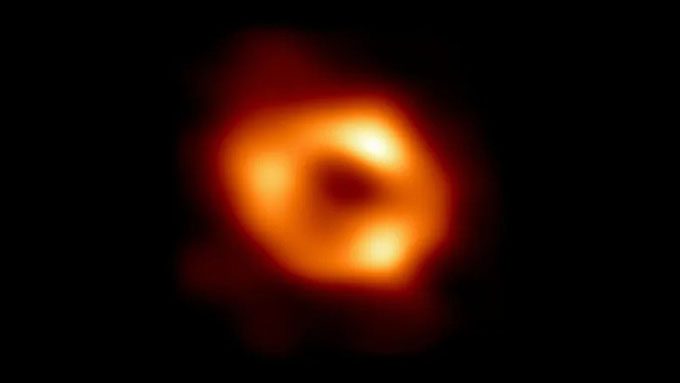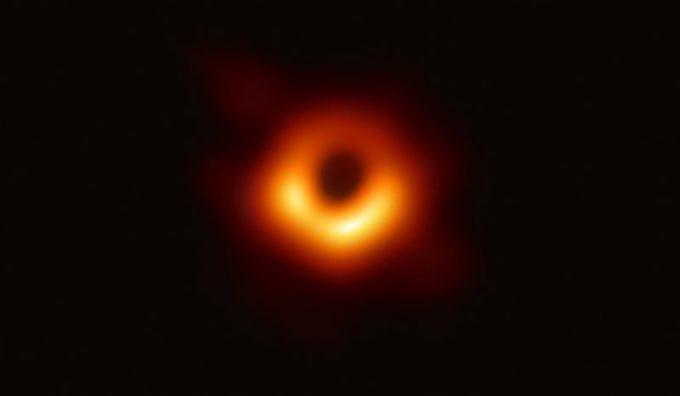On the night of May 12, astronomers announced the first image of the supermassive black hole Sagittarius A* at the center of our galaxy.

First image of the Sagittarius A* black hole at the center of the Milky Way. (Photo: EHT Project)
Using the Event Horizon Telescope (EHT), astronomers successfully captured an image of the supermassive black hole Sagittarius A* located at the center of the Milky Way, more than 27,000 light-years from Earth. The existence of this mysterious object, estimated to be four million times the mass of the Sun, has been hypothesized for a long time but has never been seen until now. The research results published in a special issue of the Astrophysical Journal Letters on May 12 provide the first direct confirmation.
“This unprecedented observation helps us better understand what happens at the center of the Milky Way and provides new insights into how massive black holes interact with their surrounding environment,” emphasized scientist Geoffrey Bower at the Academia Sinica in Taiwan, a member of the EHT project.
A black hole is a relatively small yet dense region of space where gravitational forces are so intense that nothing can escape, not even light. Therefore, the new image of Sagittarius A* does not depict the black hole itself, but rather the glowing gas surrounding it.
The existence of Sagittarius A* was first inferred in 1974 with the discovery of an unusual radio source at the center of the Milky Way. In the 1990s, astronomers mapped the orbits of the brightest stars near its center.
By 2019, this hypothesis became more certain when the EHT research team announced they had successfully captured an image of a supermassive black hole at the center of another galaxy, Messier 87, which is 55 million light-years away from Earth. This groundbreaking work was awarded the Nobel Prize in Physics in 2020.

EHT captured an image of the black hole at the center of Messier 87 galaxy in 2019. (Photo: EHT Project)
Sagittarius A* shares remarkable similarities with the black hole at the center of the Messier 87 galaxy, known as M87*. Both operate as predicted by Einstein’s General Theory of Relativity from 1915. “Near the edges of these black holes, they look astonishingly similar,” said Sera Markoff, co-chair of the EHT Science Council and a professor at the University of Amsterdam.
Although Sagittarius A* is only 27,000 light-years away from Earth, much closer than M87*, capturing its image proved to be a greater challenge.
The gas in the vicinity of both black holes moves at nearly the speed of light, but while it takes many days to weeks to orbit the larger M87*, it only takes a few minutes to complete an orbit around Sagittarius A*. The research team had to develop more complex new tools to account for these moving targets.
“Sagittarius A* is nearly 2,000 times smaller than M87*, which means light orbits around it in less than 2,000 times. That is about 15 minutes. So, every 15 minutes, it begins to show a new face,” explained Avery Broderick, an associate professor at the University of Waterloo and a member of the EHT team.
Scientists are eager to compare the two black holes to test theories about how gas behaves around them—a phenomenon that is not well understood and could play a role in the formation of new stars and galaxies.
Studying black holes—especially at their singularities, where Einstein’s equations break down—could help physicists gain deeper insights into gravity and develop a more advanced theory.


















































